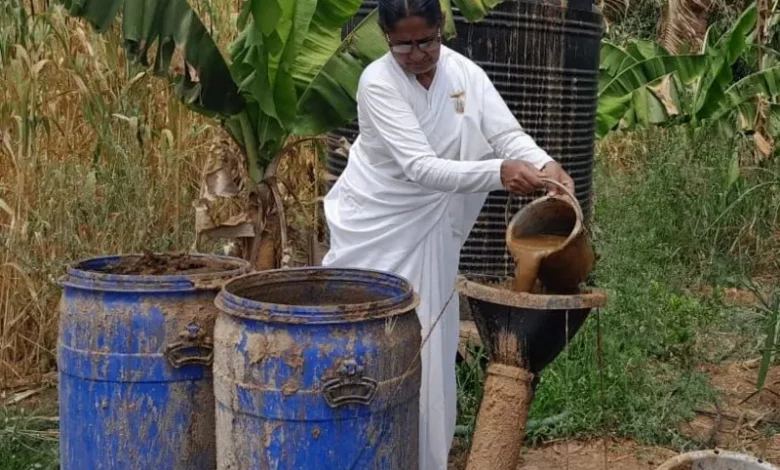Cow dung’s (Ndove) key role in India’s energy industry
Every day, with bare hands, Rukmini Baburao Kumbhar, collects around 50kg (eight stone) of fresh cow dung.

She is part of a spiritual group that runs a small ashram (a religious retreat) in a village in the north-western Indian state of Maharashtra.
Collecting cow dung is not, primarily, an effort to keep the place tidy. Instead, the cow dung is used to make biomethane.
“Fuel has become extremely expensive. Biogas was a good option. The only requirement was space and cows. We had both,” explains Ms Kumbhar.
Once collected, the cow dung is mixed with water and put in the bioreactor, where it produces enough methane for the ashram’s kitchen.
Installed in March, it has replaced the 20 litres of natural gas that Ms Kumbhar used to buy every month.
It does involve collecting the cow dung, but she doesn’t mind.
“In most of the rural parts of India, agriculture is the main occupation. So, touching the cow dung is not a big deal,” she says.
Some of her guests are less enthusiastic, at least at first.
“Some women who come to stay with us from the city are repulsed by the smell, or if they are made to touch the cow dung. But we don’t force them. They eventually get used to it and start helping. The cows are of good quality, so the cow dung does not smell,” she says.
Indian cattle produce around three-million tonnes of cow dung a day, according to data from the government’ s policy body NITI Aayog.
The government wants more of that dung, and other agriculture waste, to be made into methane.
Biogas plants do that using a process known as anaerobic digestion, which involves feeding waste into airtight tanks where naturally occurring bacteria break down the organic matter.
The process produces a mixture of gases, primarily methane (around 60%) and carbon dioxide.
At the moment, India imports around half of its natural gas needs – money flowing abroad, which the government would rather see spent at home. And as the economy grows, India’s demand for energy is only going to rise.
To spur the biogas industry, from 2025 the government has ordered gas suppliers to blend natural gas with 1% biomethane, rising to 5% by 2028.
As well as reducing India’s imports of gas, biogas can also cut air pollution, as stubble that was previously burnt, can instead be sent to bioreactors.
In addition, the material left after the bioreactor has done its work can be used as fertiliser.
With state and federal government support, bigger and bigger bioreactors are being built.
Gas produced by such commercial facilities is compressed, making it easier to transport or use as a fuel in vehicles.
Asia’s biggest compressed biogas (CBG) plant is in Lehragaga, in the northern Indian state of Punjab.
Opened in late 2022, it can turn 300 tonnes of paddy straw into 33 tonnes of biogas every day.
At the moment it is only producing eight tonnes a day, as there’s not enough demand for the fuel.
That’s partly due to its location – far from any big towns and major roads.
BBC



